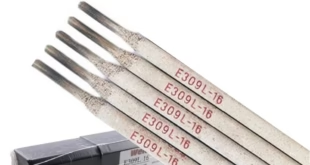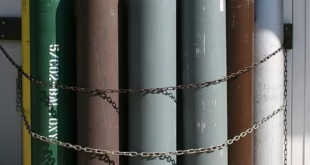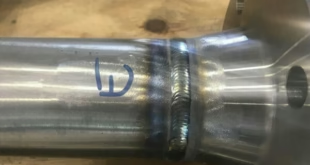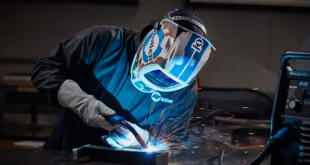What Is Duty Cycle in Welding?
In welding operations, one technical specification that plays a crucial role in equipment performance is the duty cycle. Despite its importance, this parameter is often misunderstood or overlooked, leading to improper equipment use and reduced productivity.
Why Duty Cycle Matters in Welding
The duty cycle represents the operational limit of a welding machine before it requires a rest period to cool down. Understanding this specification is essential for ensuring consistent performance, prolonging equipment lifespan, and maintaining safe working conditions.
Real-World Example of Duty Cycle in Action
For instance, a welding machine rated at a 30% duty cycle at 200 amps is capable of welding for 3 minutes within a 10-minute interval, after which it must cool for 7 minutes to prevent overheating.
Understanding the Duty Cycle
Technical Definition
The duty cycle is defined as the percentage of a fixed 10-minute interval during which a welding machine can operate at a specified amperage without exceeding its thermal limits.
How It’s Measured (10-Minute Interval Standard)
Standard duty cycle measurements are based on a 10-minute testing period. Common examples include:
20% = 2 minutes operation, 8 minutes rest
100% = continuous operation with no rest required
This uniform measurement allows comparisons across machines and manufacturers.
Common Duty Cycle Ratings and What They Mean
Typical duty cycle ratings include:
60% at 150A – Suitable for medium-duty applications
20% at 90A – Found in light-duty or hobbyist-grade welders
100% at 120A – Indicates continuous operation at moderate amperage
Higher amperage generally corresponds to lower duty cycle unless advanced cooling or industrial-grade components are used.
Factors That Affect Duty Cycle
Machine Type and Power Source
Inverter-based welding machines tend to offer better duty cycle performance than traditional transformer-based units due to greater efficiency and more effective thermal management.
Ambient Temperature and Cooling Efficiency
Duty cycle ratings are typically tested at an ambient temperature of 40°C (104°F). In real-world environments, cooler surroundings and improved airflow can enhance actual performance, whereas high temperatures may reduce it.
Amperage Settings and Output Levels
Increasing the amperage output raises internal heat generation, thereby reducing the available duty cycle. Lower settings allow for longer sustained welding periods.
Interpreting Duty Cycle on Welding Machines
Labeling and Rating Plate Interpretation
Most welding machines include a data label or chart indicating duty cycle at different amperages. For example:
| Amperage | Duty Cycle |
|---|---|
| 100A | 100% |
| 150A | 60% |
| 200A | 30% |
These figures guide users in determining how long they can weld continuously at a specific output.
Comparing Manufacturer Specifications
When reviewing specifications, it is important to confirm:
The ambient temperature at which the machine was tested
Whether the figures refer to continuous or intermittent operation
The presence of thermal protection mechanisms
Real vs. Advertised Duty Cycle Performance
Actual performance may differ from advertised ratings due to variances in build quality, component efficiency, and environmental conditions. Inverter-based machines typically adhere more closely to their published specifications.
Duty Cycle in Different Welding Processes
SMAW (Stick Welding)
Stick welding naturally involves intermittent arc use, providing automatic cooling periods that often mitigate the effects of a lower duty cycle.
MIG Welding (GMAW)
MIG welding generally involves more continuous operation, especially during long welds. As such, machines used for this process benefit from higher duty cycle ratings to support consistent operation.
TIG Welding (GTAW)
TIG welding often operates at lower currents, resulting in higher duty cycle availability. However, when welding at higher amperages—especially on aluminum—duty cycle becomes a limiting factor.
Plasma Cutting and FCAW
Both plasma cutting and flux-cored arc welding can draw significant current. In long cutting or welding operations, a higher duty cycle is essential to avoid interruptions.
Effects of Exceeding the Duty Cycle
Overheating Risks and Safety Concerns
Operating beyond the rated duty cycle can result in internal overheating, which may damage components, reduce the machine’s lifespan, or cause safety hazards.
Machine Shutdown and Damage Potential
Many modern welders are equipped with thermal overload protection that automatically disables the unit once internal temperatures exceed safe limits. Frequent overheating can degrade insulation and electronics over time.
Duty Cycle vs. Welding Efficiency
Downtime Considerations
Duty cycle directly impacts operational efficiency. Machines with lower duty cycles require more frequent rest periods, reducing total productive welding time.
Productivity and Output in Shop Settings
In environments requiring continuous welding, machines with higher duty cycles reduce idle time and increase workflow efficiency.
How to Improve or Manage Duty Cycle
Lowering Amperage Settings
Reducing the output amperage significantly increases the duty cycle. This allows longer operational periods and minimizes the risk of thermal overload.
Using Industrial-Grade Machines
Industrial welding machines often feature advanced cooling systems, oversized transformers or inverters, and durable components, allowing them to maintain higher duty cycles at higher amperage outputs.
Employing Proper Cooling Systems
Using enhanced ventilation, fan-assisted cooling, or water-cooled torches can help regulate internal temperatures, extending duty cycle and reducing the likelihood of shutdown.
Buying Tips: Matching Duty Cycle to Your Welding Needs
Hobbyist vs. Professional Use
For light-duty applications, such as DIY or occasional repair work, a machine with a 20–30% duty cycle may be sufficient. For production or structural welding, a machine offering 60–100% duty cycle at high amperage is typically required.
Duty Cycle Considerations by Material Type and Thickness
Thicker base metals demand higher amperage for proper fusion. This means welders used on such materials should have higher duty cycle ratings to maintain operational efficiency.
Common Misconceptions About Duty Cycle
“Higher Duty Cycle Always Means Better Machine”
While a higher duty cycle is beneficial for heavy-duty or continuous work, it is not inherently indicative of overall machine quality. The correct choice depends on intended use.
Confusing Duty Cycle With Continuous Welding Capability
A 100% duty cycle does not necessarily guarantee the machine can maintain arc quality or weld integrity indefinitely. It simply indicates that thermal limits will not be exceeded under specified conditions.
FAQs
What does a 60% duty cycle at 200A mean?
It means the welding machine can operate continuously at 200 amps for 6 minutes within a 10-minute period, followed by a 4-minute cooling interval.
Can I improve the duty cycle of my welder?
Yes. Operating at lower amperages, ensuring proper ventilation, and adding external cooling can extend the usable duty cycle.
Why do industrial welders have higher duty cycles?
Industrial welders are constructed with superior thermal management systems, durable components, and are designed to withstand prolonged usage at high amperage levels.
Is duty cycle the same for AC and DC welders?
No. The type of current affects heat generation and efficiency. Typically, DC welders exhibit more stable duty cycle performance due to consistent polarity and smoother arc behavior.
What happens if I exceed the duty cycle frequently?
Consistently exceeding the rated duty cycle may result in overheating, component failure, reduced equipment lifespan, and potential safety hazards.
Conclusion
Duty cycle is a vital specification that governs the operational limits of welding machines. It is directly influenced by amperage, machine type, environmental conditions, and cooling efficiency. Understanding and managing the duty cycle helps ensure safety, preserve equipment integrity, and maintain productivity. Selecting a machine with an appropriate duty cycle for the task at hand is essential for efficient and safe welding operations.
 Welding of Welders All about Welding and Welders
Welding of Welders All about Welding and Welders




